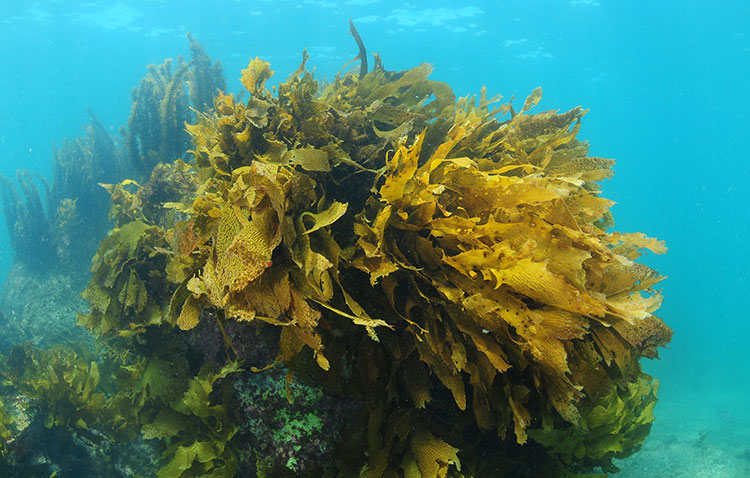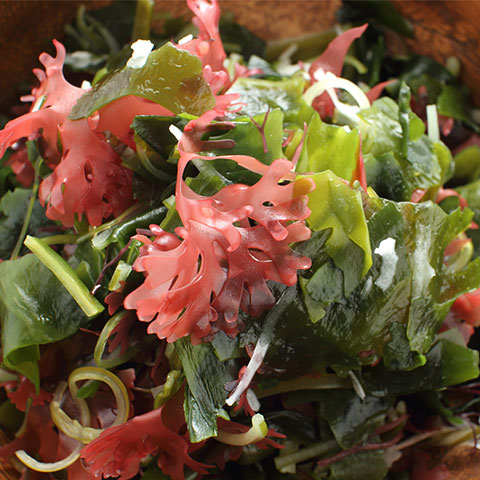
Now, it is time to delve into a topic, we believe it is important and necessary, that we had not yet dealt with, that of the composition of Algae.
We have already talked a lot about algae, its origin and history, its culinary properties, its use in cosmetics and body care.
We have also detailed important algae in Asian and European cuisine, commented on properties and benefits of macroalgae (such as Norway’s Laminaria, KELP seaweed, among others) and microalgae (such as Chorella, Spirulina and Haematococcus Pluvialis).
We have also analyzed many of the properties that algae, in general, have to combat certain viruses and respiratory problems.
Before entering into the composition, let us see which are the areas of action of the algae (Barbosa, Coutinho, Costa and Reis, 2019; Fitz-Gibbon, Chiu, Nguyen, Du, Liu, et al. (2013; Mohamed, Hashim and Rahman, 2012), in order to better understand them and in all their meaning:
- Climatic environment: Thanks to their high chlorophyll content, algae transform (with the help of the sun) carbon dioxide and water into Oxygen and Glucose. This process, called photosynthesis, is the factor that allows life to develop on earth. The algae extract CO2 from the atmosphere and expel oxygen and sulphurous gases that lead to condensation in the clouds. In this way, algae contribute to: a) regulate the climate; b) reduce the greenhouse effect; and c) purify the air we breathe.
- Nutritional and dietary scope: In reality, algae constitute a healthy and complete food, ideal for the times we live in when bad dietary habits, processed foods and the use of chemical substances in agriculture distort the sense of nutrition and they weaken our body. And, in addition to that, algae revitalize and rejuvenate us: they have all the basic nutrients we need, they purify us from the inside, and they help us maintain health. If we add to that that they can become appetizing, then we are in front of organisms that can solve many of the great problems that the world has right now (at a nutritional level, at an atmospheric level, and at a sustainable level, among many others).
- Gastronomic field: The gastronomy of the peoples that have consumed them for thousands of years has amply demonstrated that they are exquisite and suitable for the preparation of many meals and drinks.
WHAT DOES ALGAE CONTAIN?
For Hippocrates, a Greek physician from the 4th century BC and considered the father of Medicine, “our food should be our medicine.”
In the case of algae, it is very difficult to separate the nutritional value from the therapeutic value they have.
Being one of the most nutritious foods on the planet, they are ideal for both preventing and fighting diseases. Therefore, below, we are going to see in detail what their nutritional values are and what active ingredients they contain.
Thus, and according to the main research carried out in this regard, algae contain (Neto, Marçal, Queirós, Abreu, Silva and Cardoso, 2018; Kellogg, Grace and Lila, 2014; Barbosa, Coutinho, Costa and Reis, 2019) :
Easily assimilated proteins
- Seaweed is a food very rich in protein, representing on average 25% of its dry weight.
- Some species, depending on the season and the place of growth, contain more than 50% of this nutrient.
- These proteins are especially valuable as they contain a large number of essential amino acids. That is, those that our body cannot synthesize, but must assimilate through food.
- These amino acids are easy to digest due to the particular composition of algae, rich in mineral salts and some enzymes.
- This means that they reach a digestibility coefficient of up to 95% and that they are digested four to five times faster than animal proteins.
- They do not contain cholesterol, saturated fats, antibiotic residues, pesticides or synthetic hormones, as occurs with meat proteins.
Polyunsaturated fatty acids
- The average fat content of seaweed is below 5% of its dry weight, a factor that contributes to its low calorie content.
- The lipids that they contain are, fundamentally, polyunsaturated fatty acids.
- At the therapeutic level, these acids:

- They favor the permeability of cell membranes.
- They transport cholesterol preventing the formation of atheroma plaques.
- They stimulate the formation of lymphocytes.
- They are the obligate precursors of prostaglandins.
- They regulate the aggregation of platelets in the blood.
- They reduce hypertension.
- They have an anti-inflammatory effect.
- They have a regulatory effect on the immune system.
Low calorie carbohydrates
- Seaweed is relatively low in carbohydrates and sugars.
- They are, therefore, considered an ideal complement in the growth phase, in periods of convalescence, in pregnancy and during slimming diets.
- The carbohydrate mostly present in algae is Mannitol, which is a liver stimulant and slightly laxative, which does not increase blood glucose, which is why its consumption is perfectly suitable for diabetics.
- It can be said that seaweed is a low calorie food, and at a therapeutic level:
- Its sugars are, for the most part, mucilaginous, that is, they have the property of inflating in water, but are not assimilated by the body.
- This keeps blood sugar from rising and is helpful for those suffering from constipation.
- It reduces the toxicity of the heavy metals to which we are exposed daily, such as barium, cadmium and zinc.
In summary, the consumption of algae has exploded in recent years because its gastronomic and dietary qualities are increasingly evident (Lanes, Bizuayehu, Fernandes, Kiron and Babiak, 2013). They are considered a balanced, low-calorie food that provides essential nutrients. Because, as all research agrees, algae are rich in (Rioux, Turgeon and Beaulieu, 2007):
- Vitamin A (maintains vision, skin and mucous membranes),
- Vitamin B1 (regulates the nervous system and allows hydrates to be converted into energy),
- Vitamin B2 (helps the formation of red blood cells),
- Vitamin C (takes care of cartilage and bone),
- Vitamins D, E and K (necessary for the proper functioning of each and every one of the vital organs of the human body)
- Some minerals like calcium, potassium, phosphorus, iodine, iron, and sodium.
Likewise, they are also a good source of fiber, have a purifying effect, promote evacuation and satisfy, which makes them very appropriate for weight loss diets.
References
Barbosa, AI., Coutinho, AJ., Costa, SA. and Reis, S. (2019). Marine polysaccharides in pharmaceutical applications: Marine Polysaccharides in Pharmaceutical Applications: Fucoidan and Chitosan as Key Players in the Drug Delivery Match Field. Marine Drugs, 17 (12), pii: E654.
Fitz-Gibbon, TS., Chiu, BH., Nguyen, L., Du, C., Liu, M., Elashoff, D., Erfe, MC., Loncaric, A. et al. (2013). Propionibacterium acnes strain populations in the human skin microbiome associated with acne. J. Invest. Dermatol. 133 (9), 2152-2160.
Kellogg, J., Grace, MH. and Lila, MA. (2014). Phlorotannins from Alaskan Seaweed Inhibit Carbolytic Enzyme Activity. Marine Drugs, 12 (1), 5277-5294.
Lanes, CF., Bizuayehu, TT., Fernandes, JM., Kiron, V. and Babiak, I. (2013). Transcriptome of Atlantic cod (Gadus morhua) early embryos from farmed and wild broodstocks. Marine Biotechnology, 15 (6), 677-694.
Mohamed, S., Hashim, SN. and Rahman, HA. (2012). Seaweeds: A sustainablefunctional food for complementary and alternative therapy. Trends in Food Science and Technology, 23 (2), 83-96.
Neto, RT., Marçal, C., Queirós, AS., Abreu, H., Silva, AMS. and Cardoso, SM. (2018). Screening of Ulva rigida, Gracilaria sp., Fucus vesiculosus and Saccharina latissima as Functional Ingredients. Int. Journal Mol. Sci., 30 (2), 10-19.
Rioux, L., Turgeon, SL. and Beaulieu, M. (2007). Characterization ofpolysaccharides extracted from brown seaweeds. Carbohydrate Polymers, 69 (3), 530-537.



